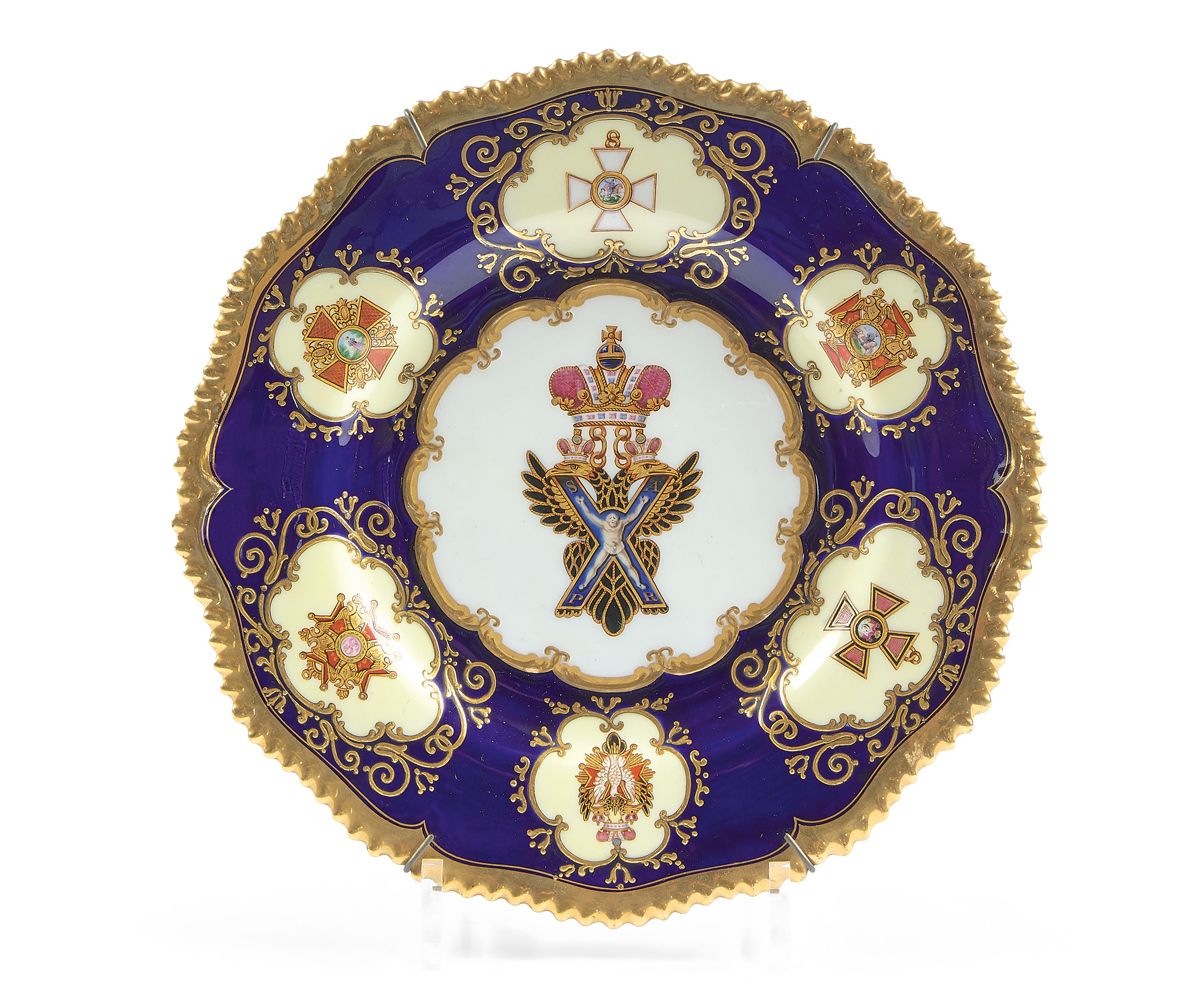Description
Service of Tsar Nicholas I of Russia, offered by Queen Victoria in 1851. Rare porcelain plate with gilded and lobed rim, the dark blue border decorated with six reserves on a pale yellow background painted with the insignia of the various Russian imperial orders: St. George, St. Alexander Nevsky, St. Vladimir, the White Eagle, St. Stanislaus and St. Anne, in the centre the Order of St. Andrew. Coalport (Shropshire) porcelain factory, circa 1845-1850. Dealer: AB & RP Daniell, New Bond St. & Wigmore St., London (1825-1917). Diameter: 25 cm Provenance: Plate from the original dessert service commissioned by Queen Victoria in 1845 to be presented to the Russian Emperor Nicholas I following his visit to England in 1844. Exhibited at the London World's Fair in 1851, the service is based on the 1833 Worcester porcelain service of William IV, the English insignia having been replaced by those of the Russian orders. The service was later re-assorted by the Imperial Porcelain Factory in St. Petersburg during the late reign of Nicholas I. Literature: Antoinette Fay-Hallé and Barbara Mundt, Nineteenth Century European Porcelain, London, 1983, ill. p. 206.
30
Service of Tsar Nicholas I of Russia, offered by Queen Victoria in 1851. Rare porcelain plate with gilded and lobed rim, the dark blue border decorated with six reserves on a pale yellow background painted with the insignia of the various Russian imperial orders: St. George, St. Alexander Nevsky, St. Vladimir, the White Eagle, St. Stanislaus and St. Anne, in the centre the Order of St. Andrew. Coalport (Shropshire) porcelain factory, circa 1845-1850. Dealer: AB & RP Daniell, New Bond St. & Wigmore St., London (1825-1917). Diameter: 25 cm Provenance: Plate from the original dessert service commissioned by Queen Victoria in 1845 to be presented to the Russian Emperor Nicholas I following his visit to England in 1844. Exhibited at the London World's Fair in 1851, the service is based on the 1833 Worcester porcelain service of William IV, the English insignia having been replaced by those of the Russian orders. The service was later re-assorted by the Imperial Porcelain Factory in St. Petersburg during the late reign of Nicholas I. Literature: Antoinette Fay-Hallé and Barbara Mundt, Nineteenth Century European Porcelain, London, 1983, ill. p. 206.
You may also like
